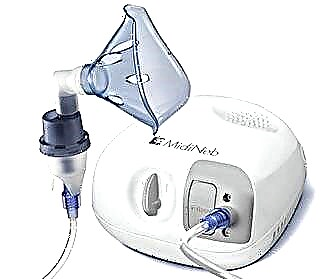Sinusitis is an inflammation of the mucous membrane of the maxillary paranasal sinuses with obstruction of fluid outflow and impaired nasal breathing. According to researchers, annually up to 10% of the total population suffers from inflammation of the sinuses in developed countries, and the figure is growing every year. This disease is quite serious, with untimely diagnosis and improper treatment, it threatens with serious complications. The article will consider the question of why and why sinusitis occurs, what is the root cause and further engine of its development.
The main reasons for the development of sinusitis and methods of dealing with them
 The appearance of sinusitis in adults can occur as a result of exposure to both external factors and disorders in the body caused by other diseases. Often, it is not possible to clearly define the psychosomatic basis of sinusitis of one specific "culprit" of the disease, since before the onset of symptoms of the disease, several negative factors were simultaneously affecting a person. Only a qualified otolaryngologist can understand this issue.
The appearance of sinusitis in adults can occur as a result of exposure to both external factors and disorders in the body caused by other diseases. Often, it is not possible to clearly define the psychosomatic basis of sinusitis of one specific "culprit" of the disease, since before the onset of symptoms of the disease, several negative factors were simultaneously affecting a person. Only a qualified otolaryngologist can understand this issue.
Consider the most common causes of sinusitis:
Viruses
Most often, they can appear during an exacerbation of respiratory diseases (from mid-autumn to mid-spring). Viruses are transmitted by direct contact with a sick person or by airborne droplets. Under their influence, the mucous membrane of the nasal cavity and the connective fistulas of the sinuses swell, the drainage of the cavity is disturbed, and a secret begins to accumulate inside. Viral sinusitis itself lasts for several days, later purulent sinusitis may occur and the reasons for its occurrence are the attachment of bacterial microflora.
To avoid infection, you should spend less time in crowded places during colds, use a protective mask or gauze bandage, lubricate the vestibule of the nose with oxolinic ointment, and, if possible, avoid contact with infected people. At a subfebrile temperature in the range of 37-38 degrees, it is undesirable to take antipyretic drugs, the body itself must fight the pathogen. Drinking plenty of fluids, taking vitamin C, and going to bed will be enough.
Bacteria
Of the whole variety of bacteria that attack a person from the external environment, pneumococci, streptococci, staphylococci and diplococci are most often the cause of sinusitis. Sometimes in the presence of chronic diseases, they interact and form complexes. The resulting sinusitis is more difficult to treat because the pathogens together are more drug resistant.
In addition, if there is no sufficiently strong general and local immunity, then the disease can be provoked by bacteria that constantly inhabit the nasopharynx and under normal conditions are not dangerous. When the body's defenses are weakened, they begin to multiply rapidly, which can cause sinusitis in adults. To reduce the chance of getting sick, it is necessary to treat diseases of the nasopharynx and mouth, accompanied by inflammatory processes, in time, temper and exercise. Bacterial sinusitis is treated primarily with antibiotics.
Allergy
 The reason for this type of sinusitis is the presence of allergens around a person, substances to which the body reacts too actively.
The reason for this type of sinusitis is the presence of allergens around a person, substances to which the body reacts too actively.
To suppress the allergen, a large amount of histamine is released, which becomes a source of edema of the nasal cavity and partial or complete overlap of the connecting channel between the nasal and sinus cavities.
The allergic process spreads to the mucous membranes of the maxillary chambers and becomes the basis for the degeneration of the mucous membrane with the appearance of cysts and polyps.
Antiallergenic drugs or surgery to restore drainage and air exchange in the sinuses when they are completely blocked can help restore the normal operation of the general nasal system.
Fungi
In the presence of certain conditions (HIV infection, decreased immunity, prolonged use of cytostatics or antibiotics), there is a danger of fungi multiplying in the maxillary cavities. The body reacts to uninvited guests by developing antibodies, which can lead to allergic reactions, in addition, the fungus damages the epithelial cells.
Inflammations, the basis of which are fungi, are rare, take a long time to heal and quickly turn into a chronic form.
Such diseases are treated with hormones (glucocorticosteroid drugs) and antifungal drugs. You can avoid them by strengthening the immune system, more often being in the fresh air and taking vitamin complexes.
Dental diseases
The anatomical structure of the human skull is such that the bridge between the roots of the upper teeth and the accessory chambers is thin, and in some people, the teeth generally protrude into the accessory cavities. This leads to the fact that infections from diseased teeth rise into the sinuses and become the culprit of odontogenic sinusitis in adults (this is especially true for the 4 posterior upper teeth).
Also, the following dental pathologies can lead to a similar outcome:
- fistula formation between cavities due to tooth extraction in the upper jaw;
- suppuration of the root protruding into the sinus of the tooth;
- periodontal disease, periodontitis and caries;
- accidental ingestion of filling materials into the maxillary cavity during the treatment of maxillary teeth.
To forestall such troubles, it is enough to properly care for your teeth and regularly visit the dentist.
Injuries to the bones of the skull
The essence of the problem lies in the fact that the full functioning of the accessory chamber may be impaired due to the mechanical effect of a bone fragment or a foreign body, which appears due to:
- fractures of the facial bones;
- injuries and other mechanical damage;
- unsuccessful facial operations (plastic or surgical).
The debris, once in the sinus, may never show itself, or, gradually moving, damage the epithelium or block the anastomosis. In this case, only surgery can help. The risk group for this type of sinusitis in adults is athletes, the military, participants in road accidents.
Delayed treatment of respiratory diseases and rhinitis
A runny nose is a common and simple disease that gets little attention and is treated carelessly in the hope that it will "go away by itself." Such neglect often turns into chronic rhinitis, which is exacerbated by any cold snap or encounter with infections. In addition, any failure in the immune system turns into profuse discharge and swelling, which is a prerequisite for the development of sinusitis.

For a full recovery, it is necessary to strictly adhere to the treatment regimen prescribed by the doctor for acute respiratory infections and rhinitis, use the proposed drugs, do not self-medicate, do not tolerate colds "on their feet" and do not stop taking drugs at the first improvement in health.
Lowered immunity
This is one of the most important reasons for the development of respiratory and other inflammatory processes. The body's response to the destructive activity of the pathogen directly depends on the defenses and capabilities of the person. Immunity is often weakened by recent or chronic ailments, prolonged use of antibiotics, unbalanced or inadequate nutrition, poor working conditions, hypothermia, hypodynamia. In such cases, the multiplication of bacteria and viruses is explosive.
Preventive measures to increase immunity are sports and any other physical activity, walking in the fresh air, taking multivitamin and mineral complexes, hardening, timely and correct treatment of colds, good healthy nutrition.
Unfavorable living conditions
First of all, this concerns the quality of the air that a person breathes. Working in a hot workshop or simply in a room with dry heated air, heating devices or central heating systems on can be an indirect cause of inflammation of the accessory chambers, no matter how strange it may sound. The fact is that the overdried mucous membrane does not fully fulfill its tasks. An insufficiently moisturized epithelium is not able to prevent pathogens that are fixed on the walls, cannot neutralize them as quickly and efficiently as possible, bind and remove them into the nasopharynx. This gives the microorganisms time to start multiplying. The situation can also be aggravated by the presence of large amounts of dust and other suspended particles in dry air.
Drying out of the mucous membranes can be avoided in quite simple ways:
- use household humidifiers on hot summer days and during the heating season;
 hang wet sheets in the rooms;
hang wet sheets in the rooms;- take a shower more often;
- rinse your nose with ordinary sea or table salt solutions;
- use protective masks in dusty rooms.
In addition to the above, the causes of sinusitis can be:
- congenital narrowing of the nasal passages;
- pharyngitis and tonsillitis in a chronic form;
- serious diseases of a general nature (radiation sickness, tuberculosis, diabetes mellitus, malignant tumors, HIV infection);
- disturbances in the work of the secretory glands;
- reaction to long-term use of vasoconstrictor drugs for colds and rhinitis;
- differences in atmospheric pressure during air travel and diving.
Features of the development of sinusitis in children
Children's sinusitis is mainly due to advanced rhinitis, with the infection moving from the nasal cavity to the paranasal sinuses. According to statistics, every second children's cold leads to complications, and at least 5% turns into sinusitis. In addition, the following can provoke illness in a child:
- mycoplasma and chlamydial infections;
- proliferation of adenoids;
- congenital deformity of the nasal septum;
- the presence of polyps;
- hypertrophy of the nasal concha;
- allergic reactions;
- protracted illness that weakened the protective functions of the body.
It is necessary to carefully monitor the child if he is prone to colds, consult a pediatrician and an otolaryngologist, and take preventive measures according to their instructions:
- restore normal nasal breathing (remove polyps, adenoids, correct the septum);
- take immunomodulatory agents such as IRS-19, Broncho-munal, Derinat;
- perform regular irrigation of the nasal cavity with saline solutions or special agents (Dolphin, Aqua-lor, Salin, Aqua-maris) to moisturize, remove dust, dead epithelial cells, microbes.
Psychosomatic bases of sinusitis
 The psychological causes of sinusitis deserve separate consideration.
The psychological causes of sinusitis deserve separate consideration.
This interesting question is controversial in academia. It is believed that people who tend to keep their emotions "to themselves" have a greater predisposition to psychosomatic sinusitis.
This is due to the fact that emotional people often cry and tears partially come out through the nose, rinsing it.
In restrained people, on the contrary, stagnation occurs in the sinus area.
The most famous in the medical environment is the interpretation of this phenomenon by the American Louise Hay, who argued that nasal congestion is the result of low self-esteem and suppression of emotions, and a runny nose is manifested due to repressed resentment and self-doubt.
At the same time, the main problems, according to Louise Hay, are:
- Emotional blockage. With a blockage of the nose, there is no way to breathe deeply, and therefore, to live a full life. This rule also has the opposite character: isolation in oneself leads to illness.
- Social adaptation. A person's rejection of any other people (at home, at work) leads to respiratory failure (allergy to people) and inflammation of the sinuses.
Russian homeopath Valery Sinelnikov believes that psychosomatic sinusitis can have roots in the subconscious, which originates from childhood or adolescence. He cites the example of his patient, whose illness was caused by a fight lost in adolescence, which led to doubts about his masculinity and strength. After several sessions, the psychologist's psychological and physiological problems disappeared.

 hang wet sheets in the rooms;
hang wet sheets in the rooms;

